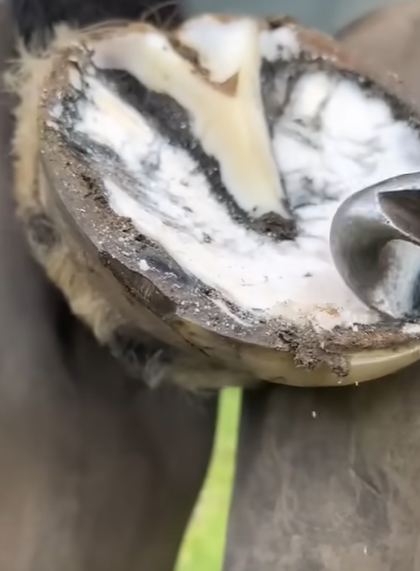The phrase “A lot of mud in this hoof” evokes a vivid image of the challenges horses face during wet, muddy conditions, which can significantly affect their hoof health. Whether on farms, ranches, or during trail rides, horses are often exposed to environmental conditions that include wet and muddy terrain. The mud can cling to their hooves, creating a breeding ground for bacteria and fungi, which can result in serious hoof issues. In this article, we explore the impact of mud on hooves, the common problems associated with it, and practical solutions for managing hoof health during muddy conditions.
The Impact of Mud on Hoof Health
Horse hooves are designed to withstand a variety of terrains, but excessive moisture, particularly from mud, can wreak havoc. The combination of moisture and the abrasive properties of mud can lead to a number of problems:
- Thrush: One of the most common hoof ailments caused by mud is thrush, a bacterial infection that affects the soft tissues within the hoof, particularly the frog. Muddy environments create ideal conditions for anaerobic bacteria to thrive, especially when hooves are regularly exposed to moisture. Thrush can lead to a foul odor, swelling, and pain, making it difficult for the horse to walk comfortably.
- Soft Hooves: Excessive exposure to wet conditions can cause the hooves to soften and become overly flexible. When hooves lose their natural hardness, they become more susceptible to bruising, cracking, and splitting. The mud can also exacerbate these issues by lodging debris between the hooves and the ground, causing further damage.
- Abscesses: Hooves that are frequently soaked in mud are more likely to develop abscesses. These painful infections occur when bacteria enter the hoof through cracks or weakened tissue, often aggravated by prolonged exposure to damp conditions. Abscesses can cause severe lameness and require veterinary intervention to resolve.
- Hoof Wall Separation: The constant exposure to mud can also contribute to hoof wall separation, where the hoof wall begins to loosen or detach from the underlying tissues. This condition is painful and can be caused by prolonged moisture exposure combined with the constant pressure and friction from walking through muddy terrain.
Preventing and Managing Mud-Related Hoof Problems
While mud can be unavoidable in certain conditions, there are several ways to help prevent and manage hoof issues:
- Regular Hoof Cleaning: After each exposure to muddy terrain, it’s essential to clean a horse’s hooves thoroughly. A hoof pick can remove mud, debris, and moisture from the hooves, ensuring that harmful bacteria and fungi do not have the opportunity to grow. Keeping hooves dry and free of foreign material is key to maintaining healthy hooves.
- Drying and Disinfecting: After cleaning, drying the hooves is crucial. In cases where thrush or other infections are a concern, disinfecting the hooves with a specialized solution can help prevent further issues. Some horse owners use antifungal or antibacterial hoof sprays to keep infections at bay.
- Hoof Protection: For horses that are consistently exposed to muddy environments, using hoof boots or shoes can provide a layer of protection. These boots can help keep the hooves from becoming too soft and reduce the risk of injury from sharp objects hidden in the mud.
- Good Drainage and Stable Care: Preventing mud accumulation in the first place is often the best solution. Providing good drainage in paddocks, stables, and pasture areas can reduce the amount of mud a horse has to walk through. Where possible, horses should be kept in areas that dry out quickly or have a designated dry space to rest.
- Proper Farrier Care: Regular visits from a farrier are crucial for maintaining hoof health. A farrier can help ensure the hooves are properly trimmed, removing any damaged areas and preventing the buildup of excessive moisture. They may also suggest specialized shoeing options to provide additional protection in wet conditions.
Conclusion
While mud is a natural part of many equestrian environments, its impact on hoof health cannot be overlooked. Horses that are frequently exposed to muddy conditions are at a higher risk for developing infections, soft hooves, and other hoof-related issues. Through diligent care, regular hoof maintenance, and preventive measures, it is possible to reduce the risk of mud-related hoof problems and keep horses comfortable and healthy. Understanding the challenges of wet and muddy conditions is crucial for responsible horse ownership, and with the right strategies in place, we can mitigate the impact of “a lot of mud in this hoof.”
